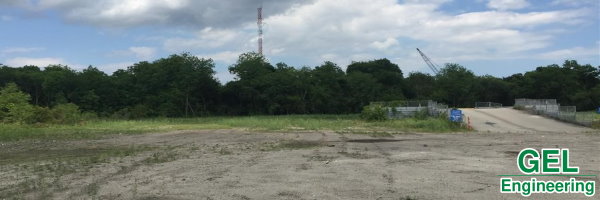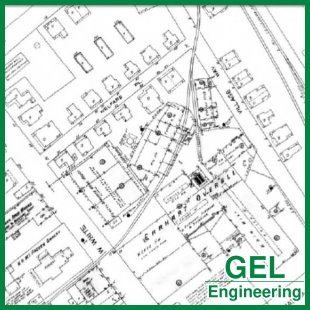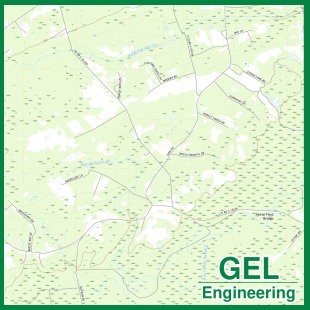Our Blog
Phase I Environmental Site Assessments Protect Buyers from Unknown Liabilities

Phase I Environmental Site Assessments (Phase I ESAs) are investigations designed to uncover obvious and hidden environmental liabilities associated with commercial properties. Phase I ESAs are necessary for all commercial properties from undeveloped woodlands to highly used industrial sites. A properly conducted Phase I ESA protects the buyers and the lenders involved with a property transaction and satisfies one of the requirements to qualify for the landowner liability protection (innocent landowner defense) under the Comprehensive Environmental Response, Compensation, and Liability Act (CERCLA).
Industry Standards for Phase I ESAs
GEL Engineering personnel use the highest standard of care when performing Phase I ESAs for our clients. We follow the American Society for Testing and Materials (ASTM) Standard E 1527, “Standard Practice for Environmental Site Assessments: Phase I Environmental Site Assessment Process” and 40 CFR Part 312, “Standards and Practices for All Appropriate Inquiries.” These guidelines are industry standards that are updated regularly to ensure that all potential environmental liabilities are uncovered during the ESA.
Identifying Recognized Environmental Conditions on a Property
The purpose of a Phase I ESA is to identify Recognized Environmental Conditions (RECs), historical RECs, controlled RECs, and de minimis conditions associated with a property. These are defined as:
Recognized Environmental Conditions (RECs) - the presence or likely presence of a hazardous substance or petroleum product on a property under conditions that indicate an existing release, a past release, or a material threat of a release of the hazardous substances or petroleum products into structures on the property, soil, groundwater or surface water at the property. The presence of RECs may require further site assessment.
Historical REC – the past release of a hazardous substance or petroleum product that was addressed to the satisfaction of the applicable regulatory authority or meeting unrestricted use criteria established by a regulatory authority. The property is not subject to any engineering or use controls from the historical REC.
Controlled REC – the past release of a hazardous substance or petroleum product that has been addressed to the satisfaction of the applicable regulatory authority, with the hazardous substance or petroleum product allowed to remain in place. The property is subject to land use or engineering controls due to the controlled REC.
De minimis conditions - site conditions that do not present a material risk of harm to public health or the environment, and typically would not be subject to enforcement action if brought to the attention of regulatory agencies. The presence of de minimis conditions does not typically warrant additional assessment.
The Steps for Conducting a Due Diligence Phase I ESA

A comprehensive Phase I ESA involves a multi-step process that includes evaluating the current property condition and researching historical site uses that may constitute a REC, historical REC, controlled REC, or de minimis conditions. During the Phase I ESA, GEL reviews public records including aerial photographs, topographic maps, fire insurance maps, flood maps, property records, and city directories dating as far back as they are available. Our scientists review federal, state, tribal, and local government records which list the past and present use of hazardous substances or petroleum products for the property being purchased as well as nearby facilities which may impact the subject property. GEL Engineering’s project geologist will also evaluate the geology and hydrogeology of the area to determine the soil types and the anticipated groundwater flow direction which allows us to determine if potential impact could spread on-site and to or from nearby properties. GEL personnel interviews the current owners and occupants of the property, the buyer, and any other local professionals such as fire departments and emergency management divisions to discover additional details about site use that are not available in the public record.
GEL Engineering personnel also performs a site reconnaissance visit to inspect the property and the nearby area. During the site visit, we speak with people knowledgeable of the site to learn about the site’s operations. The project personnel document the site visit with photographs that are included in the final report to help illustrate the current site conditions.
GEL then takes the current site information and the research of past activities for the site and surrounding properties and forms a complete picture of the area and the associated RECs.
How to Know if You Need a Phase I ESA
If you are planning to purchase a piece of commercial property you need a Phase I ESA. Buyers should always order a Phase I ESA even if they are purchasing the property with cash or if their lender does not require the assessment. The nominal cost of the Phase I ESA can prevent inadvertently assuming tremendous environmental liability that may be lurking beneath the surface.
Residential properties typically do not need a Phase I ESA. You may consider a Phase I ESA if the property has underground storage tanks or was operated as a farm or former commercial property that may have handled chemicals of concern in large quantities. GEL Engineering’s professionals can help you determine if a Phase I ESA is a necessary step in your property purchase.
Getting Your Phase I ESA Started….and Finished

A Phase I ESA cost is typically a small fraction of the overall cost of the property transaction. Typical costs for a Phase I ESA range from approximately $2,000 for a simple, undeveloped property to $5,000 for a heavily developed industrial facility with years of history in handling hazardous materials. GEL Engineering’s geologists and environmental scientists have over 75 years of combined experience in assessing the hazards of a variety of properties and can perform the assessments in a cost-effective process.
GEL typically completes Phase I ESAs within three to five weeks, but we are often able to meet quicker timeframes if needed. The speed is dependent on several factors such as site access and the delivery of Freedom of Information responses from the state regulatory agency.
Additional Property Transaction Services for a Smooth Sale
Many property transactions require more work than just a Phase I ESA. GEL Engineering’s scientists and engineers offer a wide range of property development services including:
- Phase II Environmental Site Assessments,
- Asbestos and Lead-Based Paint Assessments and Remediation,
- Radon Surveys,
- Indoor Air Quality,
- Property Condition Assessments,
- ALTA/NSPS Land Title Survey Coordination, and
- Engineering Design Services.
GEL Engineering is Here to Help with Your Property Transaction
If you need help with a Phase I ESA or other property transaction and development services, contact GEL Engineering at [email protected]. Our environmental professionals are ready to assist you with Phase I ESAs throughout the southeastern United States from our offices in North Carolina and South Carolina.

